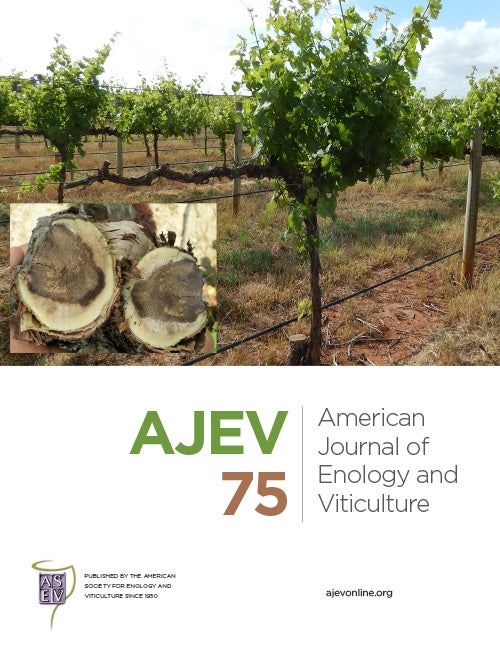2025 ASEV Best Papers Awards Announced, Available for Free
- April 14, 2025
- Category: eNews

Congratulations to the 2025 ASEV Best Papers Award winners! The selected papers will be presented at the ASEV National Conference in June in Monterey, California. You can read both papers for free on the AJEV website.
This year’s winning papers include:
For viticulture: “Trunk Cambium Facilitates Pre-Symptomatic and Year-Round Detection of Grapevine Red Blotch Virus Using the LAMP Assay,” written by Jennifer K. Rohrs, Hannah G. Fendell-Hummel, Sarah L. MacDonald, Malcolm B. Hobbs and Monica L. Cooper from the University of California Cooperative Extension, Napa County. This study found that testing grapevines for red blotch virus using a sample taken from the grapevine’s trunk (the cambium layer that separates the bark from the wood, specifically) is more effective than using leaf samples. The new method, which uses the loop-mediated isothermal amplification (LAMP) assay, can detect the virus before the appearance of symptoms. Unlike traditional leaf petiole testing, which only works during certain parts of the growing season, trunk cambium sampling can be used all year. In Napa Valley vineyards, trunk cambium sampling detected infections at a rate twice that of cane tissue sampling, and over 12 times that of petiole tissue sampling. Many vineyard managers have already begun using this technique, along with visual inspections, to detect the virus early and prevent its spread.
For enology: “Prevalence of Wildfire Smoke Exposure Markers in Oaked Commercial Wine,” by Mango Parker, WenWen Jiang, Adrian D. Coulter, Tracey E. Siebert, Eleanor Bilogrevic, I. Leigh Francis, and Markus J. Herderich from Australian Wine Research Institute. This study examined how to determine if a wine’s smoky flavor originates from standard aging in oak barrels or from exposure to wildfire smoke. Several types of Australian wines that had not been exposed to wildfire smoke were tested to establish baseline levels of smoke-related chemicals. The authors found that oak barrels naturally introduce certain smoky compounds, like guaiacol and syringol, at relatively high levels, and while markers that typically indicate wildfire exposure were present, they only occurred in small amounts. This research presents a clearer picture of the phenolic compounds typically found in oak-aged wines, enabling researchers to confidently identify which of these wines have been affected by smoke.
Share:
Latest News
ENEWS
Support the Future of Enology and Viticulture – Give Before Year’s End
As 2025 comes to a close, we invite you to make a lasting impact by supporting the ASEV Foundation. Your year-end gift will help fund...
ENEWS
Call for Abstracts Deadline February 10
ASEV and ASEV-ES invite you to submit an abstract for presentation at the joint 77th ASEV National Conference and 50th ASEV Eastern Section Annual Meeting...
ENEWS
ASEV Members Will Get Another Opportunity to See Dr. Catena in January
ASEV members have another opportunity to hear from one of the industry’s most respected voices in wine science, Dr. Laura Catena. The internationally recognized vintner,...
ENEWS
Vineyard Sensing to Sensory — ASEV’s Next Stop: Boise
Vineyard Nutrition Symposium - June 16, 2026 From emerging nutrient-sensing tools to field-level applications, ASEV’s Vineyard Nutrition Symposium will showcase how cutting-edge research is reshaping...
ENEWS
Boise Bound: ASEV Heads to Idaho in 2026
The joint 77th ASEV National Conference and 50th ASEV Eastern Section Annual Meeting will bring wine and grape professionals from around the world to Boise,...
